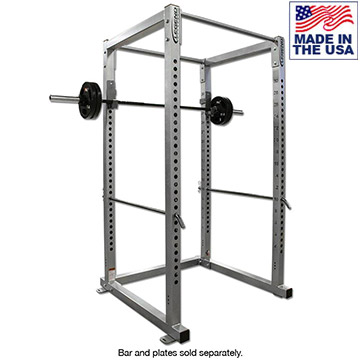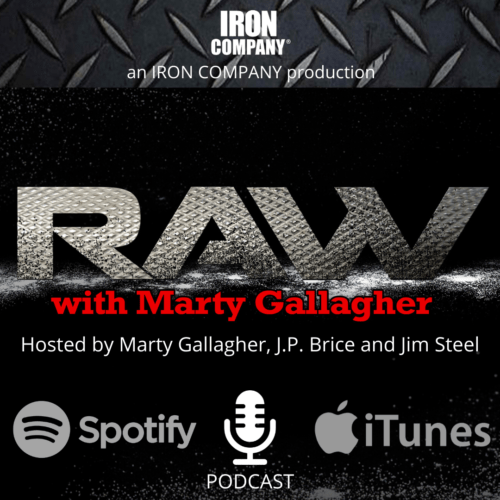
Every Home Gym needs the indispensable Power Rack
The three pieces of gym equipment needed to start a serious home gym
I love to train at home. I train in an unheated garage gym out back of my 140-year old house. I can train in solitude and really get into a workout. I find on my own turf I am able to immerse myself into the actual training in a way I am not able to at a commercial gym. Plus my home gym, aka power rack, is just steps away whenever I am home and in the mood to train. I put on my iPod, select the music as I walk to the garage and proceed to get lost in my very own Private Idaho…that blissful mental state that comes from deep and intense training. I am an expert at crushing a targeted muscle or body part in a progressive resistance training session.
If you want to elicit the real benefits associated with expertly applied progressive resistance training you need to continually approach, equal or exceed your current limits in some manner or fashion. You need to establish current best efforts in the important progressive resistance exercises. Establish "personal records" in the different rep ranges in the different exercises, and then continually seek to approach, equal or exceed these personal records.
Only through intense physical effort do we trigger the dramatic increases in muscle growth and raw strength and power we seek from our resistance training efforts.
The definition of "limit" (or equalling or exceeding limits) can take many forms. The only way the adaptive response is triggered is if the progressive resistance trainee continually bumps up against exercise "limits," regardless the expression of limit selected. An athlete continually pushing the lip of the limit envelope will, on occasion, miss a repetition. If the trainee misses a rep deadlifting or while doing a power clean or a curl, no problem; if the trainee misses a rep during a limit squat or bench press they put themselves at risk of injury. Getting pinned under a missed squat or having a 250-pound barbell stuck on your chest is potentially catastrophic.
The good news is there is a way in which to squat and bench press up to and past your limits and do so in perfect safety. You need to have a power rack.
There are three critical pieces of gear for any serious fitness devotee intent on starting their own home gym: an Olympic weight lifting bar, an adjustable weight bench and a power rack. With these three tools you can generate your very own radical physical transformation and do so in total safety and in the comfort of your own home. Purchase an Olympic barbell set. Purchas an adjustable exercise bench: a flat bench that can incline to any angle up to 90-degrees.
Everyone that purchases a barbell and an adjustable bench also needs a power rack. The power rack becomes the epicentre of any home gym, like the stove in the kitchen. A properly used power rack keeps a man safe and allows him to test and extend his limits in the important progressive resistance exercises: squats, bench press variations, various overhead presses - plus the iron cage provides an overhead chin bar. A man using a barbell inside a power cage can push up to and past capacity - and if you occasionally miss a bench press, incline barbell press, squat or front squat, it becomes a non-event. The lifter simply rides the missed rep down to the safety supports and slides out.
Just last week I was bench pressing and had decided that, after three warm-up sets, I would perform three sets of six paused reps in the flat bench press. On the final rep of the last set I could not force my triceps to lock out the last four inches. I missed the rep and had to bail: I resisted the weight as I lowered it down to my inflated chest. I deflated and "high centred" the barbell on the two long safety bars set just below the level of my torso. I slid out from underneath the barbell, now resting on the long support bars. Ditto with a missed squat: go for that final, growth-producing rep and if your legs fail, ride the squat bar down to the pins and slide out.
The power rack can also be used to perform partial reps: set the support bar mid—thigh and practice deadlift lockouts. The power rack makes barbell incline pressing, at various angles, completely safe. Set the supports bars just below chin level and barbell incline to your hearts content in total safety. It is freeing and result producing to not have to have a training partner (or two) as spotters in order to "go for it" when squatting or benching. I am convinced the radical increases in power, strength and muscle size come from those barely made final reps of the top set. Without spotters or the safety of a power rack, the trainee is not going to attempt those growth-producing, iffy, potentially injurious reps.
You can trick-out the basic power rack. I got mine with a pull-down attachment, a seated cable row attachment and a dip attachment. I can do pulldowns to the front and back using different grip and handle types; I can do triceps pushdowns; I can do seated cable rows and low-angle cable curls. I can do bodyweight dips, weighted dips and partial dips. I also use the power rack to do partial-rep training and heavy isotonic pulls. As I mentioned, it has a chin bar front and center.
All in all, the three-way combination of barbell, adjustable bench and power rack are all the tools needed to trigger a transformation. Though it would be nice to pimp-out the home gym and perhaps add an extensive collection of dumbbells, and one of those bomb-proof Air Assault Bikes for some Old School cardio…once you get the home gym up and running, adding toys and tools is the most natural thing on earth. And the best part about a home gym is it is always right there on the premises and always open for your business.
About the Author - Marty Gallagher
As an athlete Marty Gallagher is a national and world champion in Olympic lifting and powerlifting. He was a world champion team coach in 1991 and coached Black's Gym to five national team titles. He's also coached some of the strongest men on the planet including Kirk Karwoski when he completed his world record 1,003 lb. squat. Today he teaches the US Secret Service and Tier 1 Spec Ops on how to maximize their strength in minimal time. As a writer since 1978 he’s written for Powerlifting USA, Milo, Flex Magazine, Muscle & Fitness, Prime Fitness, Washington Post, Dragon Door and now IRON COMPANY. He’s also the author of multiple books including Purposeful Primitive, Strong Medicine, Ed Coan’s book “Coan, The Man, the Myth, the Method" and numerous others. Read the Marty Gallagher Biography for a more in depth look at his credentials as an athlete, coach and writer.



